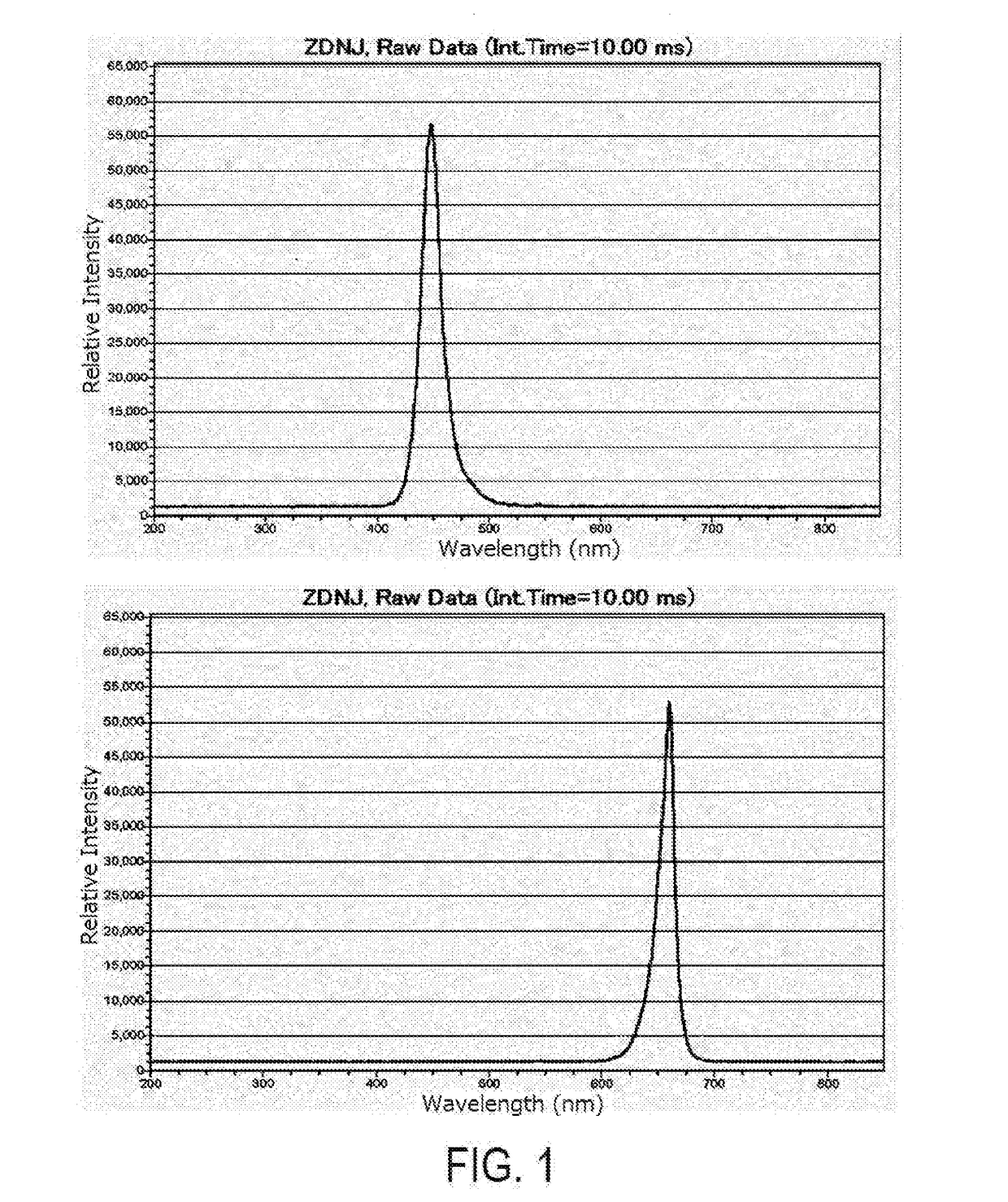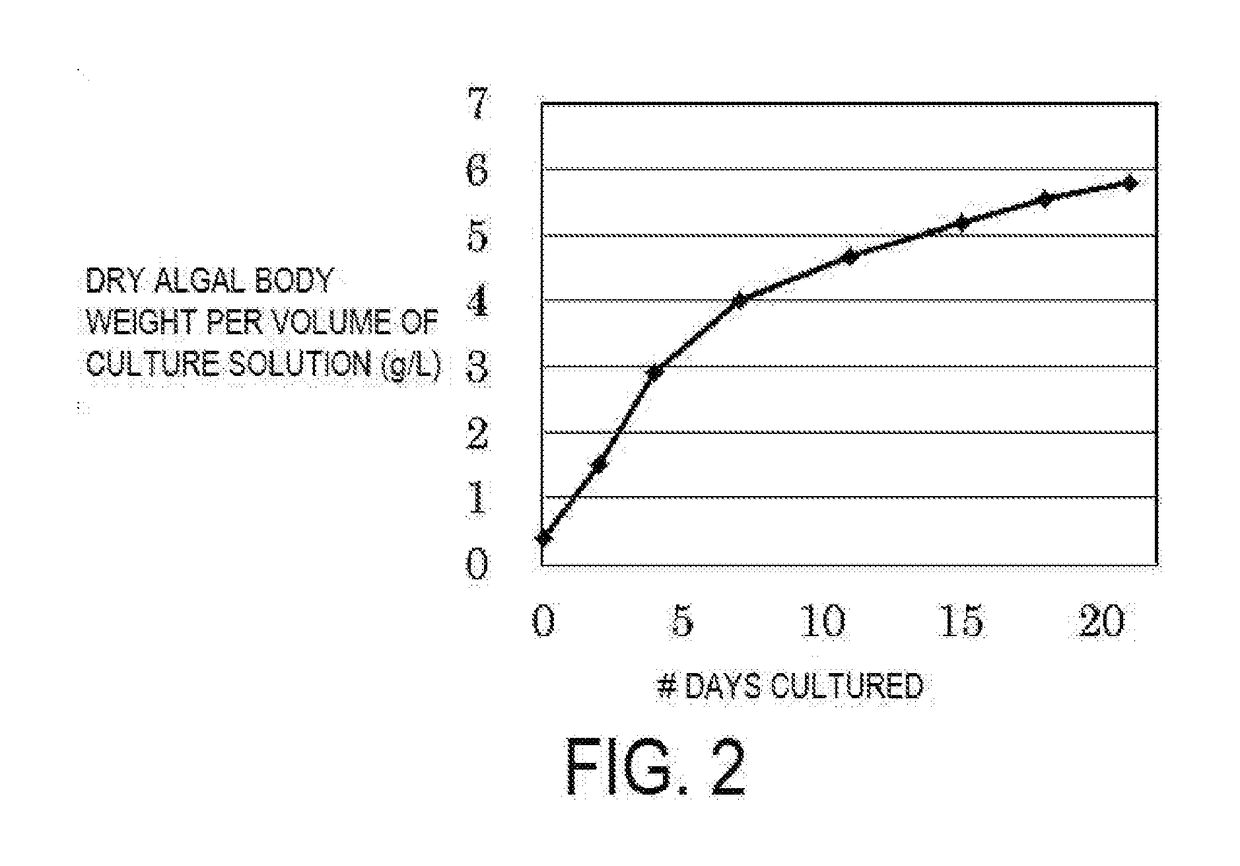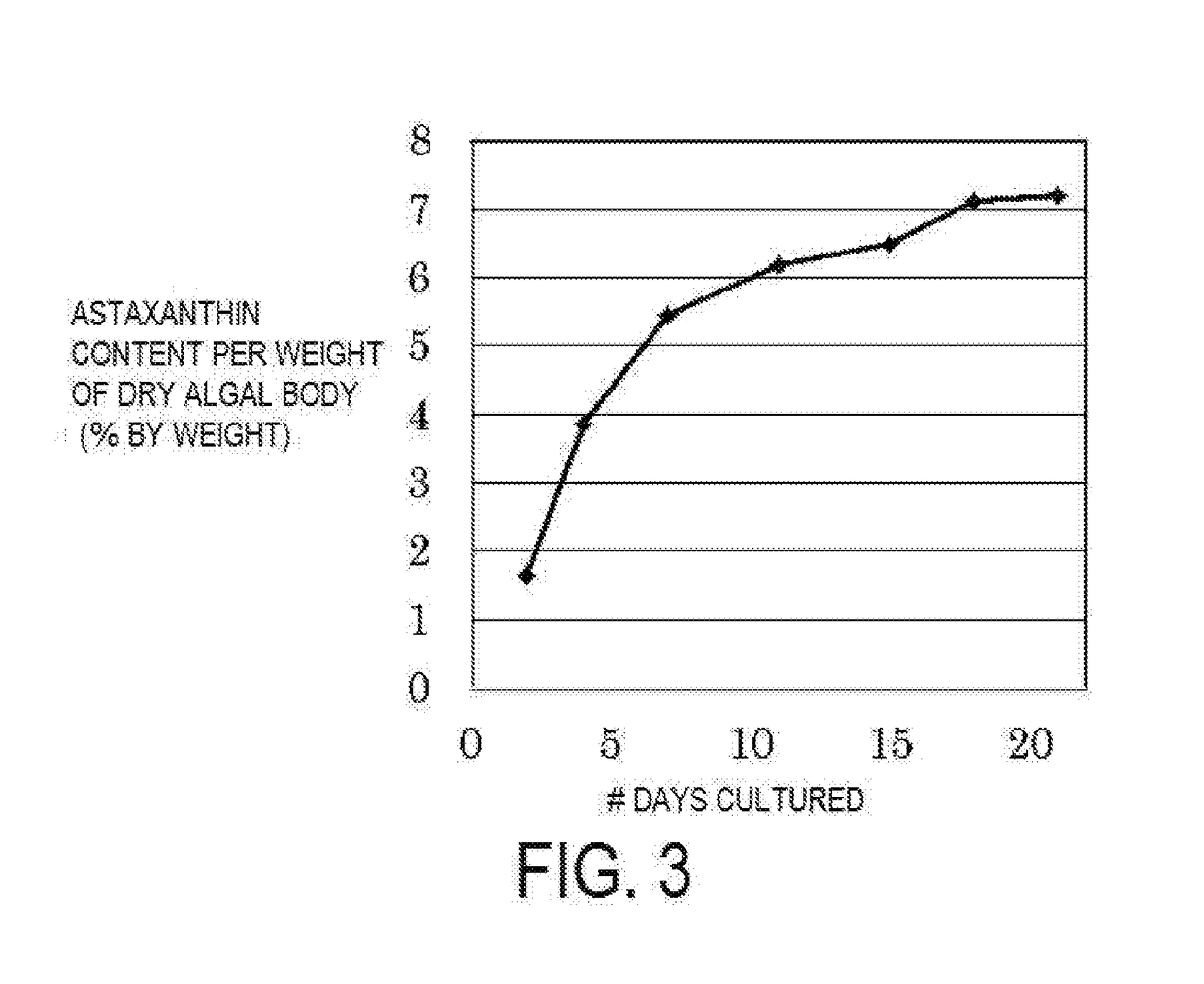Method for producing astaxanthin
a technology of astaxanthin and astaxanthin, which is applied in the direction of biochemistry apparatus and processes, microorganisms, enzymes, etc., can solve the problems of large electrical power, inability to produce stable and efficient astaxanthin, and large amount of power required for the air conditioning system to control the heat generated by fluorescent lamps, etc., to achieve the effect of efficient production of astaxanthin
- Summary
- Abstract
- Description
- Claims
- Application Information
AI Technical Summary
Benefits of technology
Problems solved by technology
Method used
Image
Examples
working example 1
[0073]Culturing of Haematococcus (Growth Culturing)
[0074]15 mL of culture solution, containing vegetative cells of Haematococcus lacustris strain NIES144 (preserved at the National Institute for Environmental Studies Microbial Culture Collection facility) in a concentration of 500,000 cells / mL, and 750 mL of BG11 modified A medium (Table 1) were poured into each of four transparent glass culture vessels 50 mm in inner diameter and 500 mm high. The cells were cultured at 25° C. while stirring and ventilating with air containing 1% carbon dioxide, under continuous irradiation by a fluorescent lamp so as to result in a photon flux density of 50 μmol / m2 / s. As a result, growth of 450,000 vegetative cells / mL was seen in each culture vessel on day 5 of culturing.
[0075]Culturing of Haematococcus Using Various Light Sources (Astaxanthin-Producing Culturing)
[0076]Then, after sodium chloride was added to each culture solution so as to result in a concentration of 2 g / L, light was radiated from...
working example 2
[0081]Culturing of Haematococcus (Growth Culturing)
[0082]15 mL of culture solution, containing vegetative cells of Haematococcus lacustris strain NIES144 in a concentration of 500,000 cells / mL, and 750 mL of BG11 modified B medium (Table 3) were poured into a transparent glass culture vessel 50 mm in inner diameter and 500 mm high. The cells were cultured at 25° C. while stirring and ventilating with air containing 1% carbon dioxide, under simultaneous continuous irradiation by a blue LED of wavelength 450 nm (photon flux density 50 μmol / m2 / s) and a red LED of wavelength 660 nm (photon flux density LED 30 μmol / m2 / s). As a result, growth of 360,000 vegetative cells / mL was seen on day 4 of culturing.
[0083]Culturing of Haematococcus (Astaxanthin-Producing Culturing)
[0084]Then, after sodium chloride was added to the culture solution so as to result in a concentration of 2 g / L, astaxanthin was produced at 28° C. while stirring and ventilating with air containing 1% carbon dioxide under s...
PUM
| Property | Measurement | Unit |
|---|---|---|
| peak wavelength | aaaaa | aaaaa |
| peak wavelength | aaaaa | aaaaa |
| wavelength | aaaaa | aaaaa |
Abstract
Description
Claims
Application Information
 Login to View More
Login to View More - R&D
- Intellectual Property
- Life Sciences
- Materials
- Tech Scout
- Unparalleled Data Quality
- Higher Quality Content
- 60% Fewer Hallucinations
Browse by: Latest US Patents, China's latest patents, Technical Efficacy Thesaurus, Application Domain, Technology Topic, Popular Technical Reports.
© 2025 PatSnap. All rights reserved.Legal|Privacy policy|Modern Slavery Act Transparency Statement|Sitemap|About US| Contact US: help@patsnap.com



